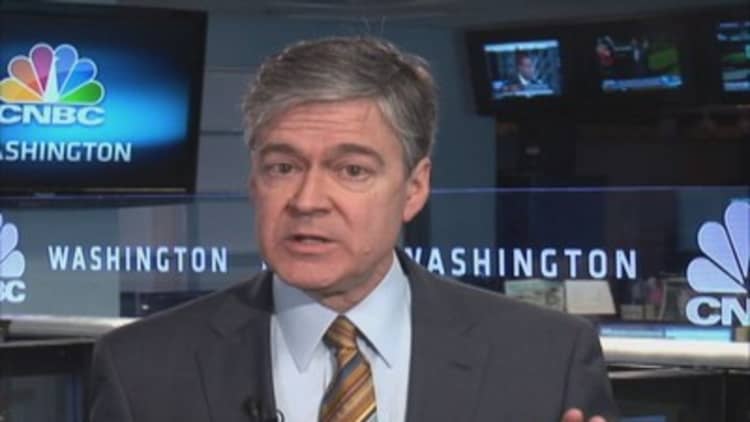Executive orders are as old as the U.S. Constitution itself and usually steeped in controversy.
Every president, from George Washington to Obama, has used them. More than 13,000, in one form or another, have been issued since 1789.
While there is no specific provision in the Constitution that permits them, there is a "grant of executive power" given in Article II of the Constitution,
(Read more: Frustrated Obama's message: I'll go it alone)
Presidents have used that language, along with their constitutional powers as commander and chief over the nation's military, to issue executive orders—whether it be to change domestic policy or go to war. And they are legally binding—the U.S. Supreme Court has upheld all but two legal challenges to them (see more on that below).
Most executive orders stem from a president's desire to bypass Congress. The legislative body is not required to approve any executive order, nor can it overturn an order. The best it can do if it doesn't like an executive order is to pass a law to cut funding for the order's implementation. But even then, the president can veto such a defunding law.
(Read more: Obama 2014: Not your year (so far): Poll)
The one sure way of getting rid of an executive order is in the White House. If an administration doesn't like an order from a previous president, it can legally reverse it on its own.
Some of the more famous and contentious examples of executive orders include:
- President Abraham Lincoln's suspension of the writ of habeus corpus and the Emancipation Proclamation during the Civil War.
- President Franklin Roosevelt—who holds the record for most executive orders—issued one in 1942 that led to Japanese-Americans internment camps during World War II.
- President Harry Truman integrated the armed forces under an executive order in 1948.
- President Dwight Eisenhower issued an executive order in 1957 dispatching federal troops to Little Rock, Ark., where crowds had prevented the desegregation of all-white Central High School.
- Both President John F. Kennedy and President Lyndon Johnson used executive orders in the 1960s to bar racial discrimination in federal housing, hiring and contracting.
- President Ronald Reagan used an executive order in 1984 to bar the use of federal funds for advocating abortion. President Bill Clinton reversed it when he took office in 1993.
- Clinton used a series of executive orders to allow U.S. military forces to fight in the Balkans in the 1990s.
- President George W. Bush issued an executive order in 2001 that restricted public access to the papers of former presidents. Obama revoked it in 2009.
- Obama's executive orders include one in 2012 halting the deportation of hundreds of thousands of illegal immigrants who were brought to the U.S. as children. He also issued one raising the minimum wage for federally contracted workers to $10.10 from $7.25 an hour.

Two executive orders have been overturned by the judiciary branch.
One, which Truman issued in 1952, was meant to prevent strikes during the Korean War by placing all the nation's steel mills under federal law. The Supreme Court said the order was invalid because it attempted to make law, rather than to clarify or further a law put forth by the Congress or the Constitution.
The second order, from Clinton in 1995, prevented the federal government from entering into contracts with organizations that hire replacements for striking workers. The U.S. Court of Appeals for the District of Columbia said it was regulatory in nature and preempted by the National Labor Relations Act, which guarantees employers the right to hire permanent replacements.
(Read more: Forget the State of the Union, focus on the Fed)
The debate over executive orders usually comes down to political bickering: The party that's out of the White House traditionally rails against them, but orders are suddenly OK when it gets back in.
The fact remains that unless Congress passes a law banning executive orders—and there's an effort to do that—that is upheld by the Supreme Court, the executive order is here to stay.
—By CNBC's Mark Koba

